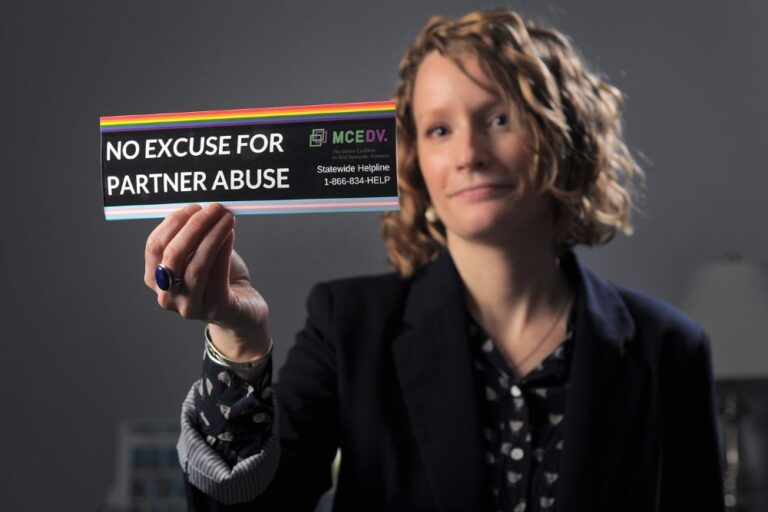In the main hallway of Mt. Ararat High School in Topsham, a large paper eagle with colorful feathers stretches across the wall. On each feather, students have written the name of someone or something they rely on when life is difficult.
Rose Tuttle, a junior, wrote: crocheting, meditation and her family.
“We glued them all together to make the big eagle as a resource for other kids,” Tuttle said. “If they are looking for a source of strength, they could look at the eagle, and read the vast amount of ideas and things they could try (to feel better).”
Tuttle is a member of Sources of Strength, a school group that came up with the idea for the eagle mural to get students thinking about what supports their mental health. It’s one of several approaches at schools around Maine as students, parents, counselors and educators deal with high levels of stress, anxiety and depression among youths during and after the pandemic.
A recently released survey found that last year nearly 43% of Maine high school students reported their mental health was not good “most of the time” or “always” during the COVID-19 pandemic.
The survey results also made it clear that some groups struggled more than others. Depression and suicide statistics were much worse for students who are female or identify as LGBTQ.
Maine health experts and advocates called the statistics “staggering,” “terrifying” and “heartbreaking.” But there are reasons to be hopeful. Programs like Sources of Strength, trained and supported by National Alliance on Mental Illness (NAMI) Maine, establish mental health support for young Mainers through adult advisors and peer leaders.
In Topsham, Tuttle concluded that the message of support is especially valuable if it comes from peers because they know what other teens struggle with and what might be helpful.
During the pandemic, Tuttle said she found it difficult to regulate the amount of time she spent on social media.
“Me and my friends were spending hours a day on social media, comparing and feeling bad about ourselves, and wanting to be perfect people,” Tuttle said. “That would take a toll on our health and cause every little thing to feel super important, because we want to have a perfect image and to be a perfect, happy person. You need to realize nobody is perfect.”
Tuttle said she learned skills and coping mechanisms, which she shared with her friends and peers.
“I learned a lot about how to improve my own mental health (and) how important mental health is. It’s just as important as physical health,” she said.
This preventative approach is a way to talk about depression without being depressing, said Darcy Baggett, a social worker at Mt. Ararat High.
“What I love about Sources of Strength is that it’s kind of a suicide prevention program in disguise,” Baggett said. “We don’t really talk about suicide directly in our meetings or during our projects. We talk about people’s sources of strength.”
Trauma of COVID
Counselors, advocates and mental health experts pointed to a host of reasons why youth struggled during the pandemic. They didn’t have contact with their regular community through clubs, sports or the friends they sat with at lunch. Remote learning and social distancing created a sense of isolation. They lost their sense of structure, belonging and purpose.
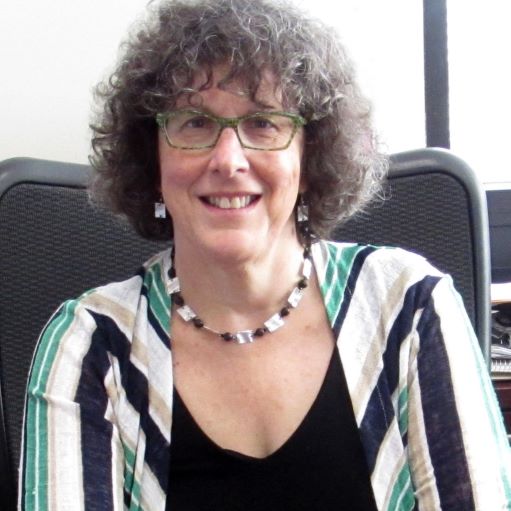
And the impact of the pandemic could linger for a while, said Dr. Linda Durst, chief medical officer with Maine Behavioral Healthcare. Even as classes returned to in-person and social distancing measures have eased, there’s still uncertainty about new variants and changing recommendations, she said.
There have been positive outcomes, like more awareness around mental health, Durst said. But COVID-19 upended so many parts of life over the last two years, including major milestones such as graduation.
“COVID has been a prolonged trauma,” Durst said. “It’s hard to know how long the impacts will last. This is kind of unknown territory in a way. That’s why I’m concerned there could be a prolonged effect.”
The pandemic was hard on everyone but especially hard on youths, said Greg Marley, clinical director of suicide prevention with the NAMI Maine. Younger Mainers didn’t have the same life experience and coping skills as adults to manage stress, he said.
“If I’m 65 years old, the pandemic is hard on me. I face the same sense of isolation, but I face it from much more history of going through ups and downs, typically from a more settled lifestyle than someone who is 18, 20 or 23,” Marley said.
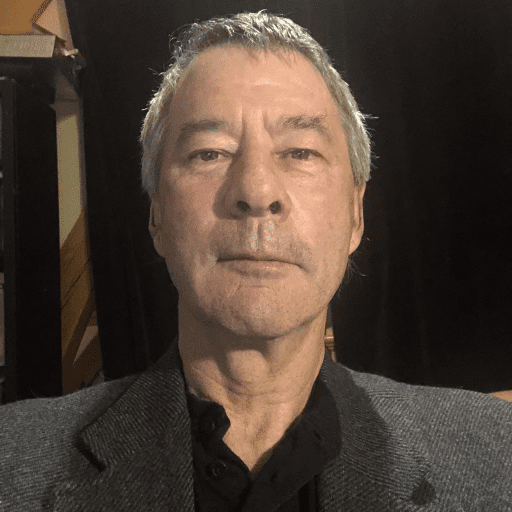
The results were more stark for some groups than others. About 33% of female students said they had harmed themselves by cutting or burning, compared to 13% of male students. Nearly 57% of female students said their mental health was not good “most of the time” or “always,” compared to nearly 29% of male students.
Marley said this follows larger trends. Females of all ages are diagnosed with depression at almost twice the rate of males. Culturally, men tend to channel distress into anger, Marley said, whereas women tend to internalize distress into anxiety and depression.
In addition, students who identify as LGBTQ reported higher rates of hopelessness and suicidal thoughts. About 12% of heterosexual students seriously considered suicide over the past 12 months. By contrast, 41% of bisexual students, 42% of gay or lesbian students and 53% of transgender students said they considered it.
The numbers are “heartbreaking,” said Gia Drew, executive director of Equality Maine. “We’ve been screaming about it at Equality Maine and trying to ring the alarm bells. It seems like people just don’t want to pay attention. It’s really frustrating.”
The pandemic was especially hard on LGBTQ youth because school might be the only place where they feel like they can really be themselves, Drew said. Their support systems disappeared when learning went remote and clubs like the Gay-Straight Alliance could no longer meet.
Even before COVID-19, mental health statistics for LGBTQ youth in Maine were trending in the wrong direction, Drew said. Efforts to increase awareness and training for Maine teachers and schools felt like they were gaining momentum, she said, but then came a backlash both nationally and in Maine.
“Kids hear that. They hear adults saying horrible things about who they are and about the teachers who are supporting them,” Drew said. “No wonder they’re feeling lousy about themselves.”
A network of groups that supports young LGBTQ Mainers provides programs like summer leadership camps, weekend retreats and dances, but more needs to be done, Drew said. And Equality Maine is pushing for more universal policies on educational models for teachers about how to talk about what it means to be LGBTQ.
“We have to keep pushing to make more programs accessible so kids all across the state get to feel more safe,” Drew said. “There’s only a few organizations doing this work and we’re kind of stretched thin.”
Working on solutions
After a youth suicide in her Bath community in 2016, Jamie Dorr said she felt compelled to do something. She pulled together people from numerous organizations, schools and departments to talk about ways to prevent another suicide. The result was the Midcoast Youth Center, based in the skate park.
Now the youth center sees about 60 kids come through its doors a day, said Dorr, the executive director. They have a “holistic” approach to mental health support by creating a place where kids can go after school to have fun, but also build strong relationships with adults based on trust, Dorr said.
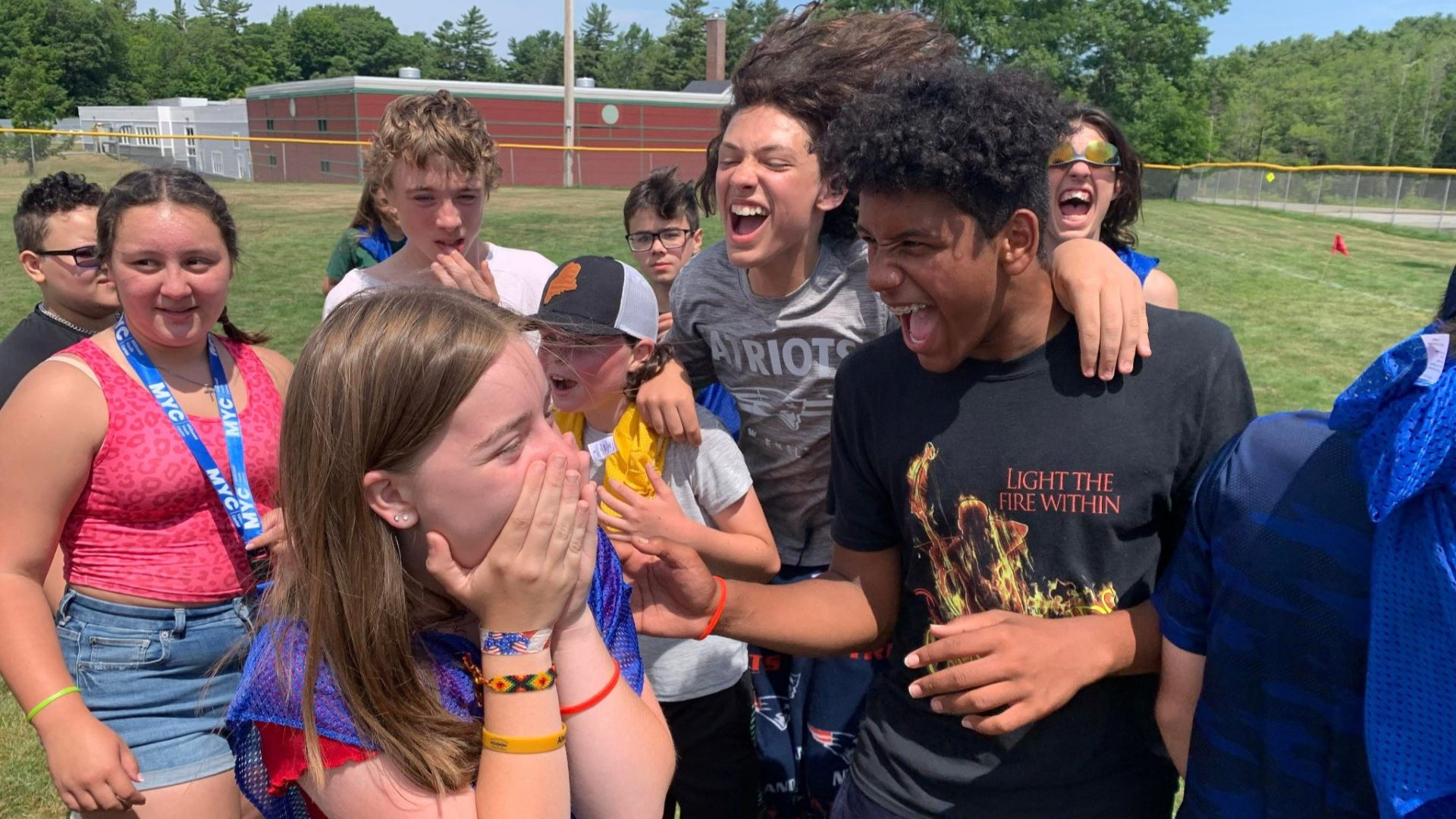
Adults have been trained in mental health first aid from NAMI about how to help someone navigate a crisis. The organization can also be a resource for connecting kids to crisis lines or helping them with difficult conversations with their parents.
The Midcoast Youth Center also supports about 65 kids experiencing homelessness by helping them navigate healthcare, SNAP benefits, doctor visits and any other basic needs. During the pandemic, the caseload was at its highest, Dorr said. Many of the kids had high rates of substance use in their family or left home because they identify as LGBTQ and didn’t feel safe there.
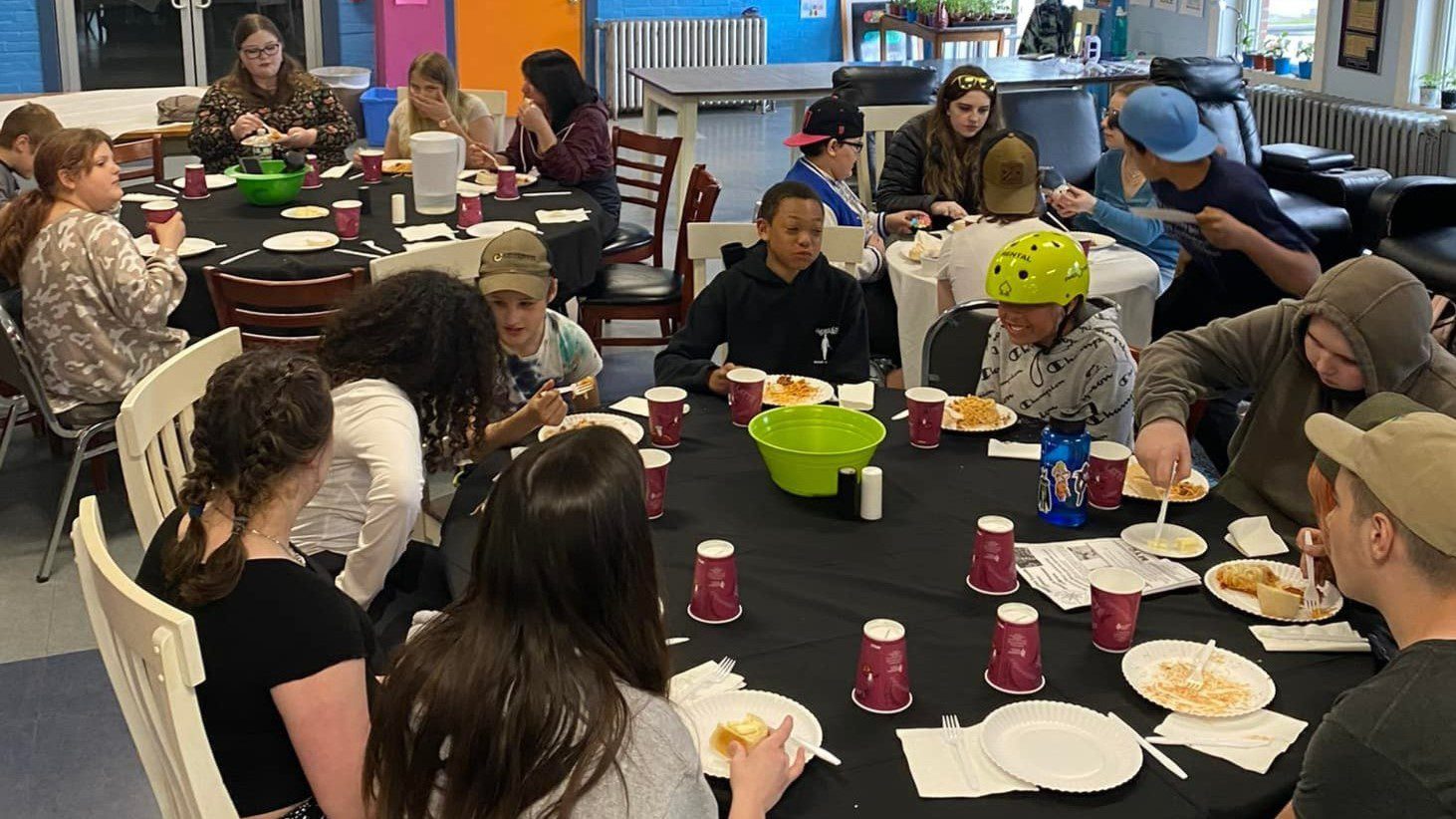
Part of their program also raises up youth leaders, Dorr said. They have an internship program with college social work interns during the year. And young adult leaders help mentor and provide feedback.
This is important because youth turn to friends more than other adults, according to the recent survey. About 1% sought help from a teacher, 11% from a parent and 17.5% from friends.
For this reason, Lisa Katz, a social worker at Lincoln Academy in Newcastle, said she started a group for girls struggling with anxiety in her school to support each other. Katz said she heard from a lot of freshmen who are socially self-conscious and feel like they don’t know how to start conversations.
Lincoln Academy also has a Sources of Strength club. Their students created a tree mural with each leaf representing a person or thing that brings each student comfort.
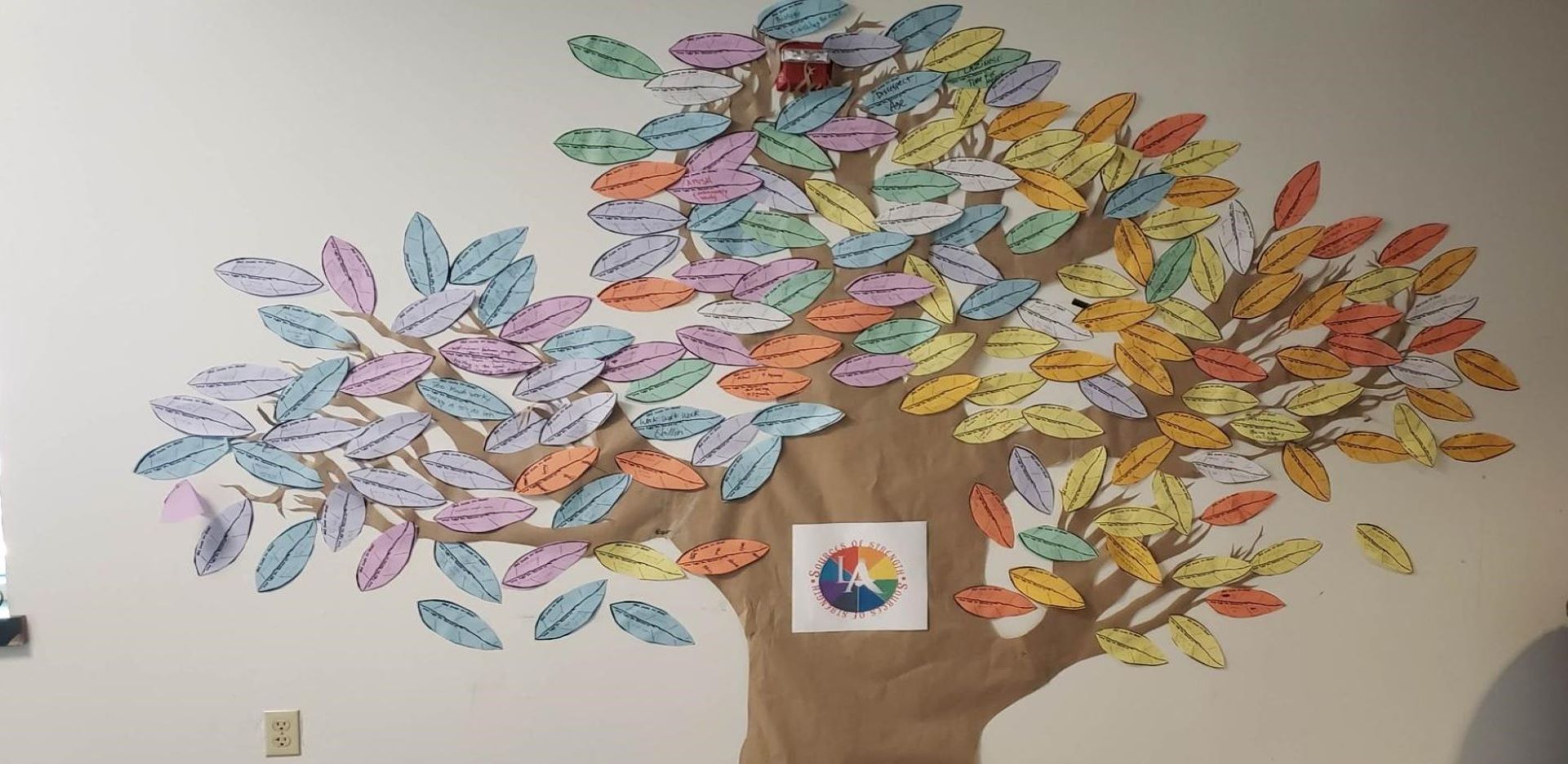
The Sources of Strength group also created posters, wrote an article for the newspaper, started an Instagram page and gave presentations during community meetings. A couple of girls composed a song about vulnerability and performed it at a community meeting last year, Katz said.
“What the kids are doing is quite profound,” she said.
Katz said she was surprised how many students reached out to her directly for help, instead of being referred to her by a teacher or student. A number of them were high-achieving kids who had never struggled with mental health before, indicating how the challenges have impacted almost everyone during the pandemic.
“Because we were all thrown into this situation together and the boat was upset for everybody, maybe there is an opening there to talk more about mental health and about feeling off or having a rough time. In that sense, it was so universal that maybe it’s given more young people permission to say ‘I’m not feeling OK’ or ‘I do need extra help here.’ ”
If you or someone you know is affected by any of the issues raised in this story, call the Maine crisis hotline at 888-568-1112 or text the national crisis text line at 741741. You can also dial 988 to be connected to the hotline.
Rose Lundy covers health for The Maine Monitor. Reach her with other story ideas by email: gro.r1752119156otino1752119156menia1752119156meht@1752119156esor1752119156.







